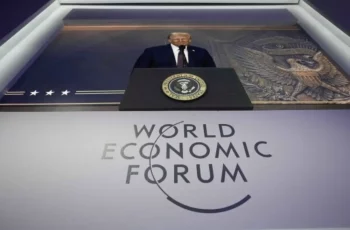
The tariff-driven prisoner’s dilemma between China and India could work to Russia’s advantage.
One of the three pillars of Trump’s newly announced policy towards the Ukrainian Conflict is the imposition of up to 100% tariffs on Russia’s trading partners if a peace deal isn’t reached within 50 days. This is much less than the 500% tariffs that his ally Senator Lindsey Graham proposed in his “economic bunker buster” bill, the rate of which Trump said after Monday’s announcement “is sort of meaningless”. Even so, 100% tariffs would still be a very big deal, especially if they’re applied against China and India.
Those two are predicted to be his top targets since they’re Russia’s largest energy clients and all three form the RIC core of BRICS and the SCO, the two multipolar groups that Trump wants to break up. NATO chief Mark Rutte also predicted that these sanctions “will slam back on [them and Brazil] in a massive way.” Other energy clients like the EU and Turkiye could be exempted from his threatened sanctions on the pretext that they provide aid to Ukraine as inspired by the proposed amendment to Graham’s bill.
Imposing 100% tariffs against China, India, or both could backfire against the US by ruining their trade talks and possibly accelerating the nascent Sino-Indo rapprochement, the respective consequences of which could be higher prices for Americans and complications for their country’s “Pivot (back) to Asia”. From the perspective of the US’ perceived interests in this context, the worst-case scenario would therefore be that China and India defy its threat, thus compelling the US to back down or tariff both.
That scenario isn’t as unlikely as some skeptics might expect. While the continued Sino-Indo rivalry could lead to a prisoners’ dilemma whereby they both comply with the US’ demand to at least reduce their energy imports from Russia, thus possibly avoiding its 100% tariffs (even if they’re tariffed at a reduced rate as a reward), keeping alive their preliminary trade deal in China’s case and trade talks in India’s, and not getting on the US’ bad side, it could also make the US’ worst-case scenario more likely. Here’s how.
Compliance would harm their growth due to higher energy prices that would give their uncompliant rival an edge. Ties with Russia could be harmed too: Russia might cut a deal with the US if China complies so as to avert dependence on a then-unreliable China, thus accelerating the US’ “Pivot (back) to Asia” at its expense; while Russia could redouble ties with China if India complies and curtail arms exports to it in exchange for more Chinese support, thus giving China a decisive edge in their fierce border dispute.
Accordingly, the continued Sino-Indo rivalry might actually lead to each suspecting that the other won’t comply in order to avert the aforementioned respective scenario, which their potentially noncompliant rival might consider to be more detrimental to their grand strategic interests than defying the US. They might then come to share the same assessment and therefore not comply either, thus leading to the earlier described worst-case scenario for the US where it either has to back down or tariff both.
In this best-case scenario from Russia’s perspective, the Kremlin might then be able to convince China and India to accelerate their rapprochement since each would then find themselves in similar positions vis-à-vis the US instead of having been divided-and-ruled by its tariff-driven prisoner’s dilemma. It of course remains to be seen what’ll ultimately unfold, but as argued in this analysis, the Sino-Indo rivalry will shape Trump’s anti-Russian secondary sanctions decision more than anything else.
Source: author’s b;og










Comments